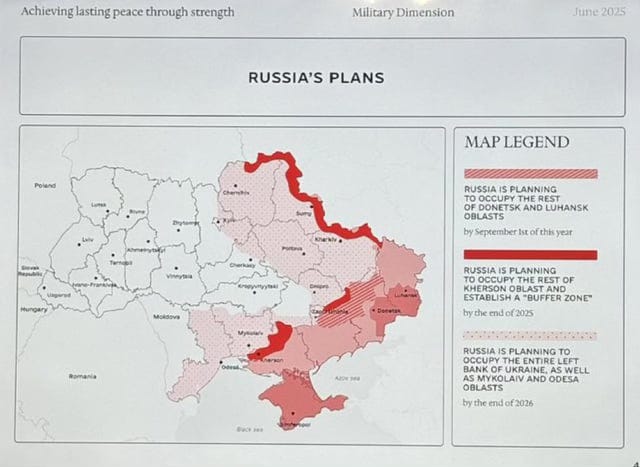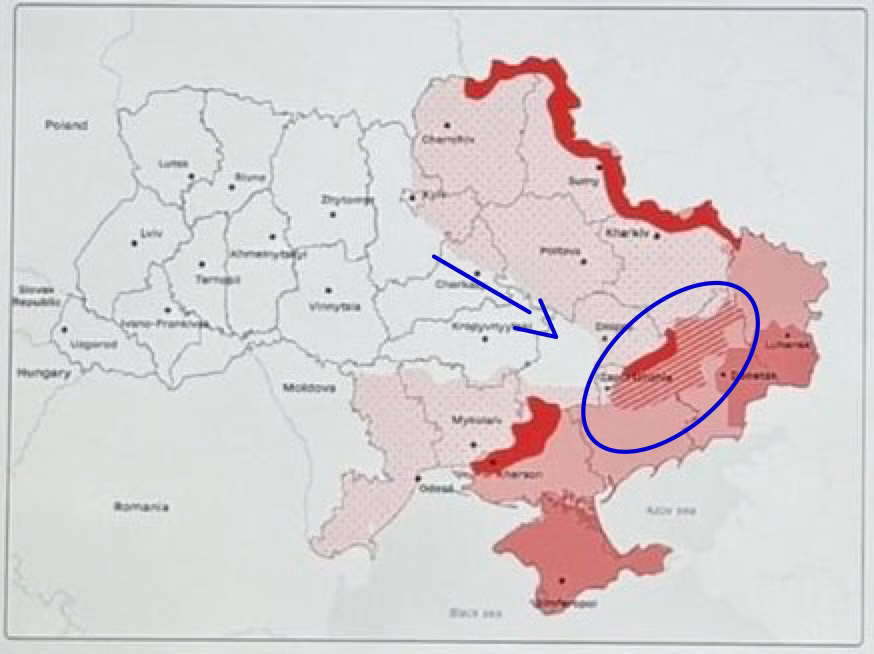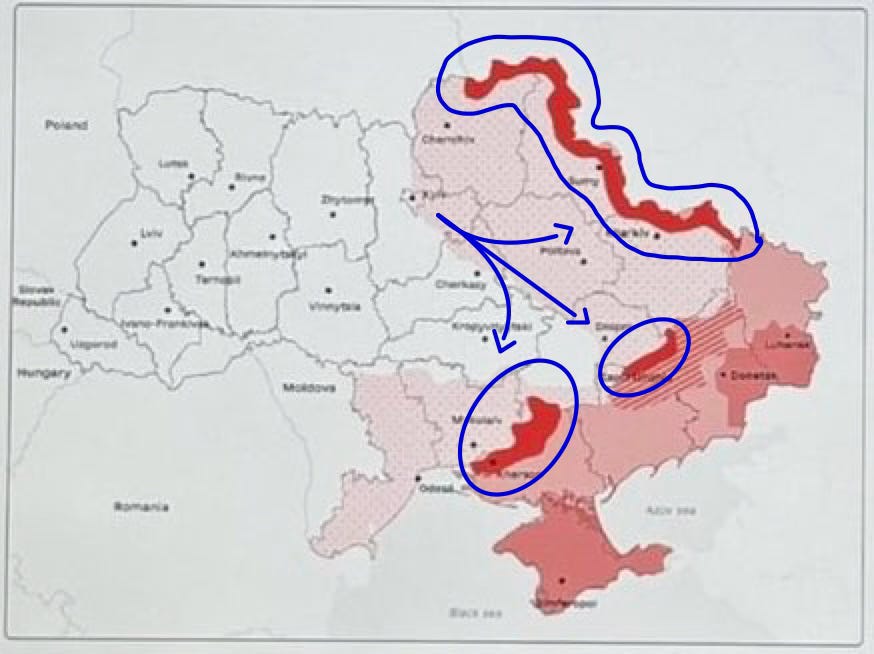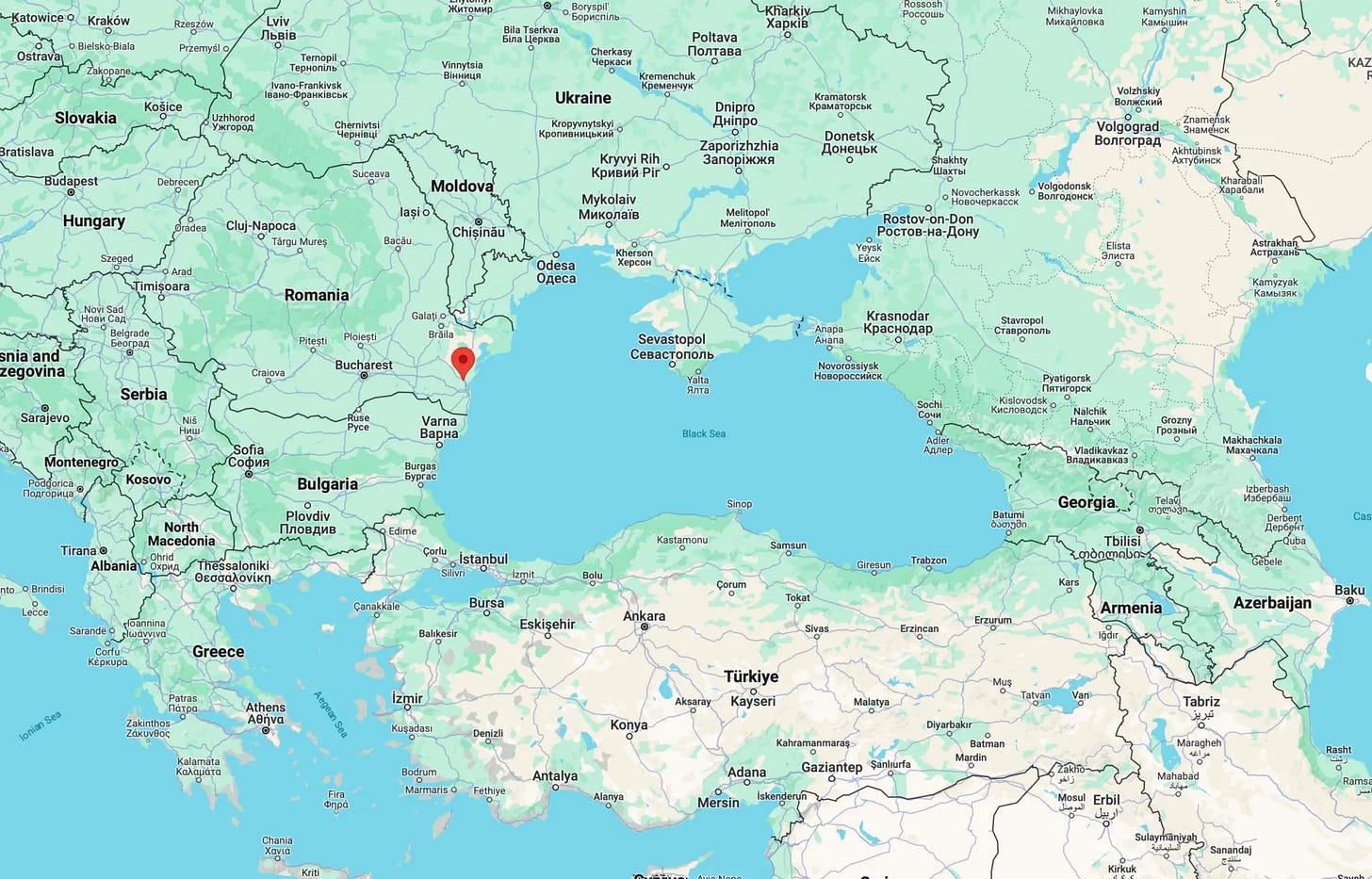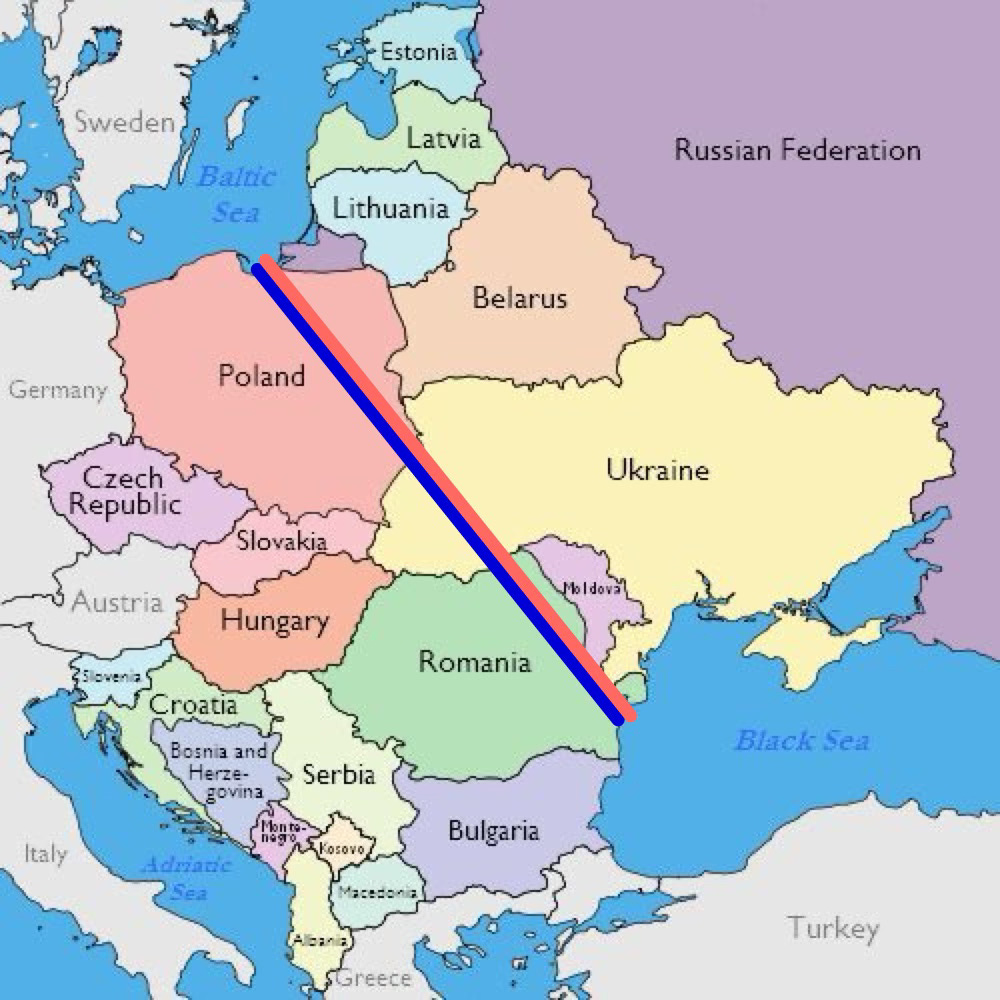Ukraine’s Future Involves Half Its Territory Under Occupation:
Russia Plans to Reach Kyiv and Odessa by the End of 2026
Every day, images from Ukraine scroll past our eyes.
Photos and videos, often brutal—so intense they make us ask ourselves, once again: why is this happening?
An FPV drone rushes full speed toward a Toyota pickup. In the bed, three or four men—sometimes Russian, sometimes Ukrainian.
The footage cuts just as the camera captures a close-up of their terrified faces.
The scenes repeat like a nightmare that refuses to fade: Soviet-era apartment blocks in Ukraine, their top floors gutted, roofs missing, walls blackened by smoke and licked by fire.
Then there’s the usual clip: a kamikaze drone slams into an armored vehicle or a factory in Russia.
The impact produces a thick black cloud, blotting out the sun for long moments.
The evening news softens it all. It sugarcoats. It spares us the worst.
But we, the ones with stronger stomachs, choose to watch.
We, who read about this war every day, have grown used to these images.
Even though we’ll never truly get used to them. How could we?
Many of us have seen the worst:
Drones chasing men. Mines waiting for vehicles. Bodies that... let’s not go there.
You won’t find graphic images in my articles—that’s not my style, and I don’t want to show suffering.
When I come across certain content on X, I watch because I want to understand. I want to know.
And yet, every time, the same question arises:
When will this war end?
But day by day, I’m starting to think that maybe... the war has only just begun.
The map you see above outlines Russia’s territorial ambitions.
This isn’t just about borders. It’s about cutting Ukrainians off from the Black Sea, occupying their capital, inching closer to Transnistria—and then to Moldova.
Maybe even occupying it. Why not?
At this point, some questions are unavoidable:
What are Russia’s real objectives? What do they truly want?
Will the Ukrainians—backed by Americans and Europeans—manage to defend their land?
Or will they be flattened by the Russians like fresh asphalt under a steamroller?
Thank you for opening this article and supporting my freedom to speak.
My views are sometimes restricted or silenced. Thank you.
First, the facts. Then, the opinions.
We’re only at the start of June, yet this month already feels like it’s shouting something at us.
Operation Spider Web has destroyed around twenty aircraft. The Crimean bridge has been hit for the third time. And in just one night, roughly 500 drones and missiles were launched at Ukraine.
Five hundred. In a single night.
But that’s not all.
There’s one story that went almost unnoticed—and yet, in my view, it’s one of the most important in recent months.
I’m talking about the map you saw earlier. That blurry and pixelated image, which briefly made the rounds online before vanishing into the noise.
Ukrainian Colonel Pavlo Palisa, during a briefing with reporters, showed what appears to be Russia’s projected expansion plan through the end of 2026.
A scenario that speaks not just of land—but of imperial ambition and a challenge to the United States.
The areas shaded in various tones of red are the ones we need to watch closely.
Let’s start with the east.
In the lower left, you can see Crimea—occupied since 2014—and part of the Donbas, which over the past few years has turned into a permanent trench.
So far, nothing new.
But then there’s more.
On the map, an area marked with red stripes and outlined in blue stretches right next to the territories already under Russian control.
That’s where the fighting is now raging with brutal and relentless intensity.
This is the first phase of Russia’s plan: to capture these territories by summer, taking advantage of dry terrain, favorable weather, and the mud-free window of time.
They’re already attacking.
They’re already there.
They’re pushing the lines, meter by meter, village by village.
Colonel Palisa returned to this point: according to intelligence gathered by Ukraine, Russia has no intention of stopping at the end of summer.
They’re planning a second phase, broader and deeper.
An expansion that, if successful, would forever change Ukraine’s borders, geography, and future.
After summer comes the winter chill, bringing with it rain and mud. It’s now September 2025.
The areas in bright red and outlined in blue that you now see on the map represent the territories Russia plans to capture during the colder months.
What’s striking isn’t so much the presence of a zone in the heart of Ukraine—almost expected—but rather the goal of retaking land already liberated by Ukrainians in 2022. A step backward, a return to the past that stings like salt in a wound.
There are two main areas:
a long, narrow strip running along the northern border;
and a flat, strategic region in the southwest, across the Dnipro River, in the Kherson area.
In the north, Russia’s objective is clear: to create a security buffer, a zone between its own forces and the Ukrainians.
It’s meant to reduce the risk of ground incursions, like those that occurred in the Kursk region in recent months.
A kind of invisible wall, made of land, mines, and soldiers.
But it’s in the south that the plans become more ambitious.
Here, the Russians intend to begin what, in their calculations, will conclude in 2026: the occupation of the Odessa oblast.
And this is exactly where the most dramatic chapter begins.
It’s January 2026.
According to Ukrainian intelligence, Russia plans to occupy all the areas in pale pink and outlined in blue visible on the map by the end of the year.
It’s a wide and aggressive geographical patch, stretching across all of eastern Ukraine, east of the Dnipro River, reaching the outskirts of Kiev.
But they wouldn’t stop there.
The plan calls for crossing the Dnipro and pushing southward, capturing Odessa and going beyond it.
Not just cutting the country in two, but opening a direct corridor to the Black Sea, annexing crucial and symbolic cities for Ukrainian history.
At this point, if the plan succeeds, Russia would control almost half of eastern Ukraine.
A conquest that goes far beyond the initial Donbas: the territory under Russian control would now start at Kyiv and end at Odessa.
A straight line, drawn with the cold, calculated precision of a military compass.
We’ve lined up the facts. Now we need to look at them for what they are: a precise, ruthless, and — perhaps — achievable plan.
When I saw that map for the first time, I laughed.
A bitter, harsh laugh.
It seemed like a provocation, a crazy idea.
But the more I looked, the more I realized there was nothing to laugh about.
If this plan is true, it would be a catastrophe.
The United States cannot allow Russia to get this close to Moldova, but especially not to Romania.
And this is not about symbols.
Romania is NATO.
One missile, even just one, and the conflict expands. From a regional war to a world war.
This map is not a drawing: it’s a warning.
And if Moscow really decides to follow it, 2026 could be the year when everything changes.
Forever.
Make no mistake: such a scenario would be a strategic catastrophe.
Not just for the Ukrainians, who would find their capital occupied, cut off from the Black Sea, without direct access to trade routes, and no way to export.
But above all, for the United States.
Because having Russia right on NATO’s eastern border means having the enemy at home.
No longer thousands of kilometers away, but just a few hours’ flight from American bases and critical infrastructure.
And the worst is yet to come.
On Romania’s Black Sea coast, NATO is building the largest military base in the Alliance.
An immense and fully operational facility, designed to host thousands of soldiers, all types of aircraft, and advanced weapons systems.
Less than 300 kilometers from Odessa.
Less than 100 km from the Ukrainian border — but with Russians instead of Ukrainians beyond that border.
If the Russians were to get that far, it would mean putting their eyes — and missiles — on that base.
And at that point, the balance would collapse.
At the center of the image lies the Black Sea.
The red dot marks the Mihail Kogălniceanu Air Base in Romania.
Once completed, it will become the largest NATO base in Europe.
It’s important to remember: besides Romania, both Bulgaria and Turkey are NATO members.
This means the entire southern and southwestern coast of the Black Sea is already under Western control.
And this is no coincidence.
We know exactly why NATO is investing in this base.
It’s not about logistics.
It’s about Russia.
The Alliance needs to dominate the Black Sea, monitor Russian movements, and have a rapid response force ready in case of escalation.
That base exists to contain Moscow, nothing more.
A country that, together with the other CRINK states, openly aims to overturn the current world order.
This is precisely why a Russian advance beyond Odessa, heading west, would be unacceptable for the United States.
There is, however, another often overlooked but crucial detail.
If Russia managed to occupy the Odessa Oblast, it would reconnect with Transnistria.
A narrow strip of Moldovan land, controlled by Moscow since the days of the Soviet collapse.
A gray and frozen territory, yet always ready to reactivate.
At that moment, Russia would secure a continuous land corridor, from Donbass all the way to Moldova.
And the entire Black Sea would become an unstable and dangerous front, with NATO on one side and Russian forces on the other.
Face to face.
If Russia were to border Transnistria, the next step would be obvious.
To annex it.
And at that point, Russia would be already inside Moldova.
A fragile Moldova, defenseless, unable to react.
With Moldova occupied, Russia would find itself sharing the entire eastern border with Romania.
No longer a hypothetical risk. But a direct confrontation.
A situation even more dangerous than the current one.
At the beginning of this story, I said that sometimes I wonder if this war is really close to ending.
Maybe not.
Maybe this is just the beginning.
And then the question is:
Do you really think the West will stand by and watch?
Do you really believe we will keep sending Ukrainians just old scrap weapons and meager ammunition?
Because if the Russians truly want to get this far, if these are the premises…
the real war hasn’t started yet.
But it could begin very soon.
I’ll leave you with an image.
Imagine a gate.
A massive and oppressive gate, one that seems made never to open.
It starts from Poland and ends on the coasts of Romania.
But it’s not just any gate.
It’s the Iron Curtain of the new millennium.
An invisible but impenetrable line.
No longer in the heart of Germany, like before.
Now it runs along the eastern borders of NATO, closing off Europe and marking what is “us” and what is “the others” — the threat.
The Russians know this well.
They know the Baltic republics are fragile and isolated, made vulnerable by the presence of Kaliningrad — or for the nostalgic, Königsberg.
They know that if they manage to cut Ukraine off from the Black Sea, their strategic position would be amplified dramatically.
A direct affront.
A challenge thrown at the West, without masks anymore...
Okay: let’s come back down to earth.
Are these Russian plans realistic?
Frankly, no.
I find it hard to believe they can push this far, in so little time.
Yet one thing I do know: never underestimate those who overestimate themselves.
The Russians are tired, but also furious.
They’ve been fighting for three years, investing men, equipment, resources.
And still, it’s not enough.
They haven’t achieved what they wanted.
And when a frustrated power is cornered, it becomes dangerous.
Maybe they just hope for a crack, like when you stretch a rubber band to the max:
it holds, holds, holds — then it snaps.
Maybe they hope the Ukrainians will break.
Now it’s up to us.
To prevent this scenario from becoming reality.
To avoid that this already tragic war becomes something worse.
When I saw that map, yes — I laughed.
But it wasn’t a laugh of amusement.
It was a hysterical and cold laugh, the kind that comes when you realize the worst might really be possible.
So, what to do?
Wait.
The USA cannot stay still, let’s wait for the next moves.
Thank you for reading. Let me know what you think.
Per aspera ad astra.




